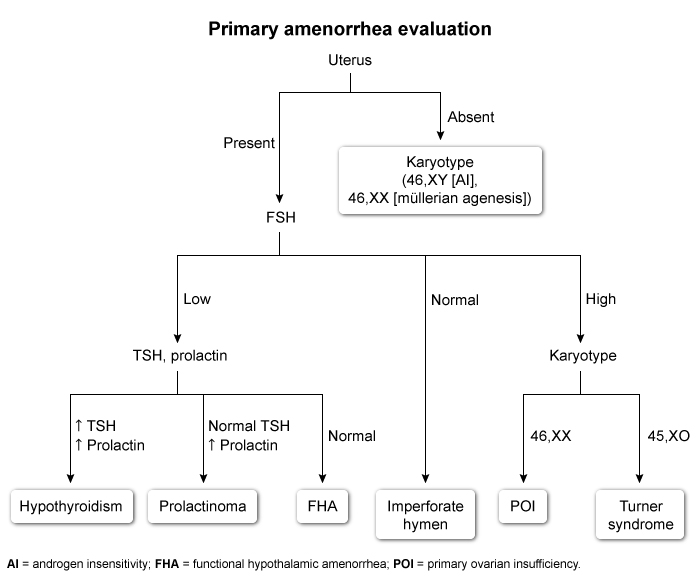Müllerian Agenesis
Article Sections
Introduction
Müllerian agenesis (or Mayer-Rokitansky-Küster-Hauser syndrome) is a congenital condition characterized by the absence or underdevelopment of the uterus and the upper two-thirds of the vagina. Patients have a 46,XX karyotype and present with primary amenorrhea and normal secondary sexual development.
Pathogenesis
The structures of the female genital tract can be divided based on the patient's embryologic origin ( figure 1), as follows:
-
The ovaries are derived from the genital ridge.
-
The fallopian tubes, uterus, cervix, and upper vagina are derived from the müllerian (paramesonephric) ducts.
-
The lower vagina and hymen are derived from the urogenital sinus.
-
The clitoris is derived from the genital tubercle, and the labia are derived from the urogenital folds and labioscrotal swellings.
Because these structures have different embryological origins, patients develop distinct congenital disorders when the physiologic process is disrupted.
Continue Learning with UWorld
Get the full Müllerian Agenesis article plus rich visuals, real-world cases, and in-depth insights from medical experts, all available through the UWorld Medical Library.
Figures
